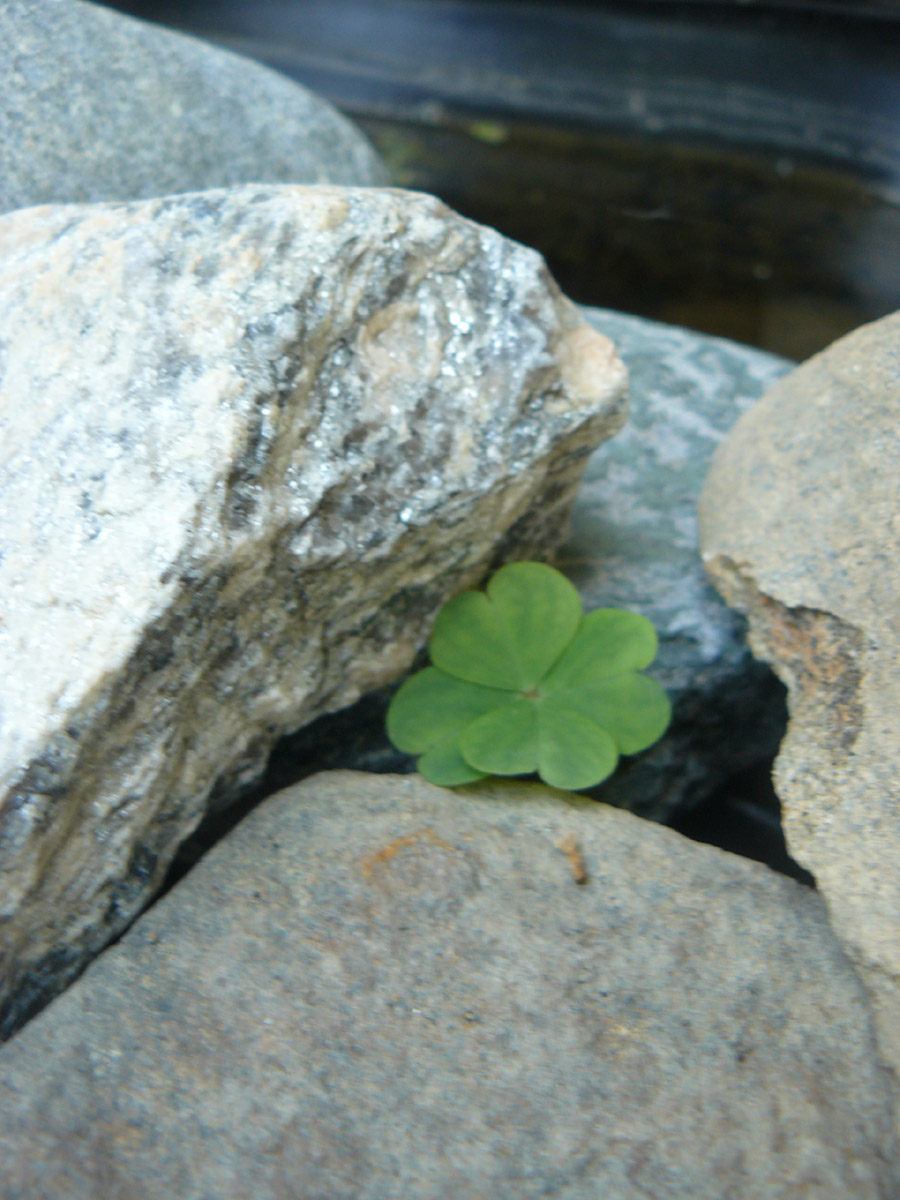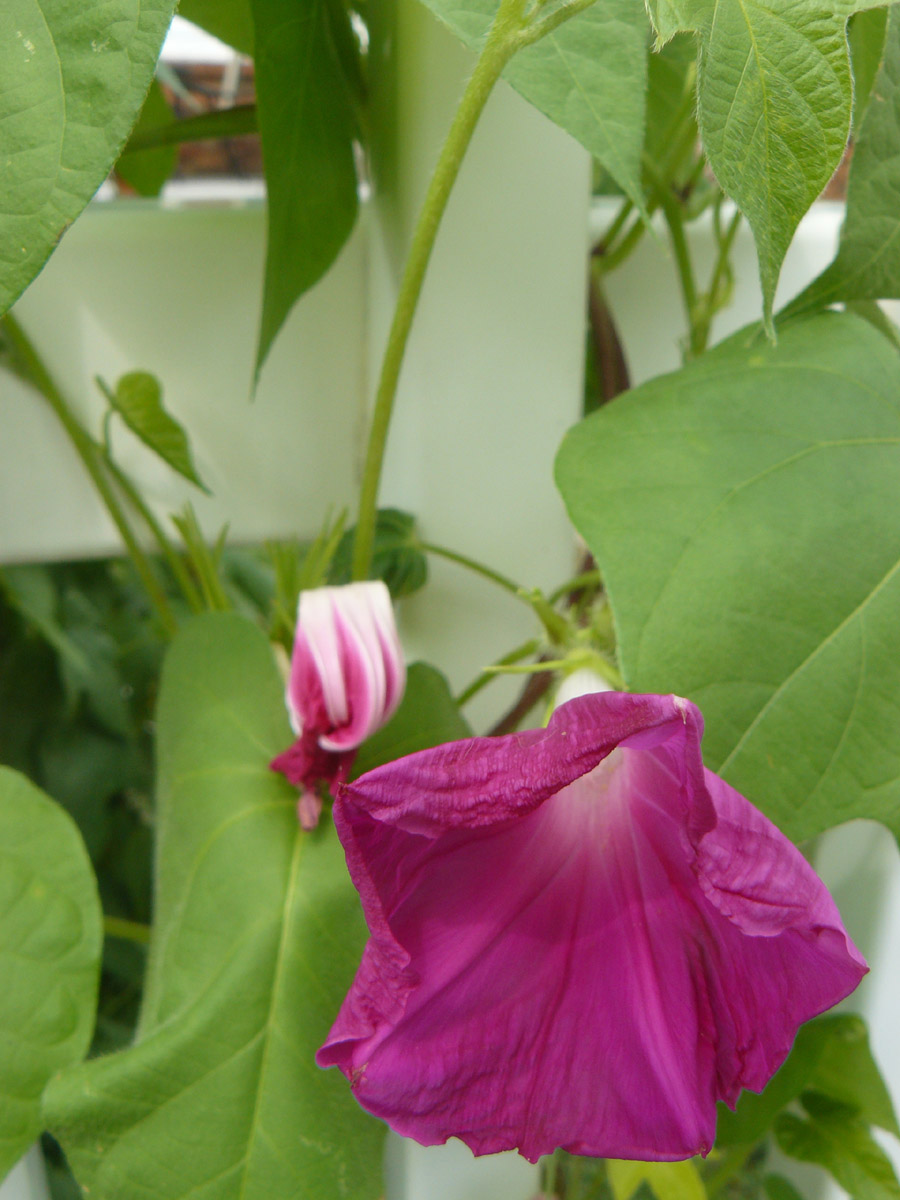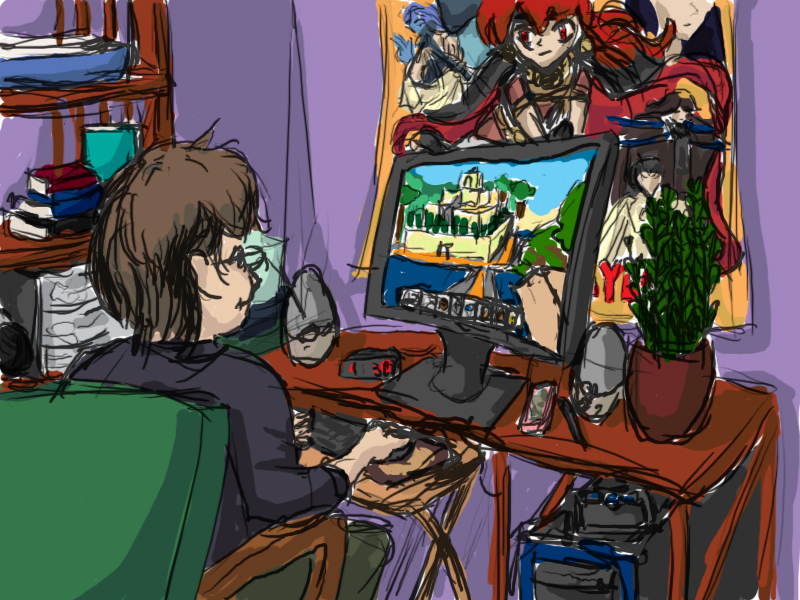 Location Taken: Savage, Maryland
Location Taken: Savage, Maryland
Date Taken: May 2010
We have mutant clover growing in the garden that is our front yard.
Well, most people wouldn’t call them “mutant.” Mutant generally carries a negative overtone thanks to the strong fear of mutation due to radiation or genetic modification that cropped up this last century.
Four-leaf clovers, on the other hand, are largely viewed as lucky. Which still doesn’t change the fact that they are mutations of three-leaf clovers.
Add in the fact that mutations actually can cause good effects rather than bad, and the situation gets even more convoluted. No one would look at a four-leaf clover and say “oh no, it’s a mutation, burn it, burn it!”, but a large number of people are saying that sort of thing about genetically engineered food, which is also a potentially helpful mutation.
Now, I’m not saying that genetically engineered food is 100% safe, but then, non-genetically engineered food isn’t 100% safe. A lot of people forget that we’ve been doing genetic engineering on our food for millenia. Corn wasn’t always as kernel-icious as it is now, it came from teosinte, which had barely any kernels at all, and certainly wasn’t yellow. But about 5000 years ago, people in Mexico started domesticating it, breeding together plants that had unusual traits that they wanted to encourage. After millenia of breeding, they ended up with modern corn.
And genetic engineering is, at the heart of it, little but centuries of breeding condensed into one generation.
Now, there are extra problems from skipping that time. You do get side mutations that can cause issues, many of which would have been worked out over those centuries. But even with that time, breeding isn’t perfect. I mean, just look at the more unusual breeds of dog. Pugs and other snub-nosed dogs all have major breathing issues, all because their ancestor’s breeders decided that dogs with shoved-in-noses were cute. Just about all the purebred lines have health issues related to their breeding, especially the popular breeds. Here’s a rather good, if lengthy, article on the subject.
Really, whether you’re going the slow route of breeding or the faster route of genetic engineering, you’re going to end up with problems. In nature, such problems would get weeded out if they’re bad enough to affect the life cycles of the species, but human-based evolution tends to pamper certain strains, even if they would not normally be competitive, just so we can have that larger strawberry or adorable corgi.
Certain mutations, after all, are quite acceptable. Like that of the four-leaf clover. It may not be the best use of resources for the clover plant to grow an extra leaf, but it does delight in its rarity. Only about 1 in 10,000 clovers have extra leaves, so finding that patch where the genetic and environmental conditions are right for such a mutation is special.
We’ve got such a patch in our front yard, growing as weeds in the garden, peeking through the rocks around my mother’s pond. Only about 1 in 100 is special, but that’s 100 times the normal rate, so there’s something about this spot that’s mutative.
I still take delight every time I spot that fourth leaf when I look at the patches of clover in the garden, even with it being more common. Special things are a joy, after all. They should be exclaimed over.




